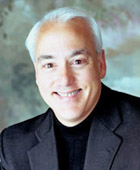
A recent trip to the American College of Health Care Administrators conference where person-centered care was conspicuously absent from the agenda and a recent study that revealed that hospital boards may not be paying as much attention to quality as they should has me worried.
Because inherent in both is the assumption that quality of care and quality of life are good. Sort of like Robert De Niro’s latest movie “Everybody’s Fine.” His character, Frank Goode, looks forward to a reunion with his four adult children. When all of them cancel their visits at the last minute, Frank, against the advice of his doctor, sets out on a road trip to reconnect. As he visits each one in turn, Frank finds that his children’s lives are not quite as picture-perfect as they’ve made them out to be.
Things are not as picture-perfect as we think in healthcare and boards need to be the overseers to reset the direction and make sure organizations are paying attention to quality of care (the clinical) and quality of life (the experience). This is particularly alarming in long-term care where the Government Accountability Office just issued a report that finds that general weaknesses in the nursing home survey process contribute to the understatement of deficiencies at nursing homes. Understatement? Could things get worse?
I blogged a lot last year about leadership and how any person-centered or patient-centered movement could not start without leadership. But perhaps there is a more systemic issue. Perhaps we need to start looking at the boards of directors of our healthcare institutions. After all, doesn’t the buck really stop there? See, for many leading our healthcare institutions the simple fact is that they may not want to change and will not change unless a higher authority mandates it.
So maybe we resolve in 2010 to build better boards. Here are a few starter tips:
— Avoid yes men/women: An effective board is comprised of people of diverse backgrounds and viewpoints that can differ from yours. They should not be afraid to offer guidance that may be disconcerting.
— Find missing expertise: Outside directors can bring in experience that your team lacks. For example, if you are serious about person-centered care, you may want to bring in a board member who has led culture change initiatives in his/her organization.
— Do not look for just CEOs: Directors of development, sales, marketing for larger companies can bring experience, and they frequently want board experience.
— Choose people who can participate fully: That may mean finding board members in close proximity where they are readily available. It also may mean looking for members who are not spread thin with other board commitments.
And maybe this all starts with a grandiose vision for your organization, an organization that looks to be of service to the community beyond the walls of the facility, that wants to contribute to the better health of all, and that wants to educate people about aging issues and choices.
Maybe a better vision will guide the selection of visionary board members. Or must we first find those board members who can then write that compelling vision?
Anthony Cirillo, FACHE, ABC is a healthcare expert, elder advocate and expert blogger for Wellsphere in the area of aging and senior health. He works with long-term care facilities and is available for management retreats and association keynotes. He is the author of “Who Moved My Dentures? His company, Fast Forward Consulting empowers organizations to change the healthcare experience and leverage it in their marketing. In his spare time he entertains residents in assisted living and nursing facilities. To read more, go to www.4wardfast.com and www.anthonyssong.com.



